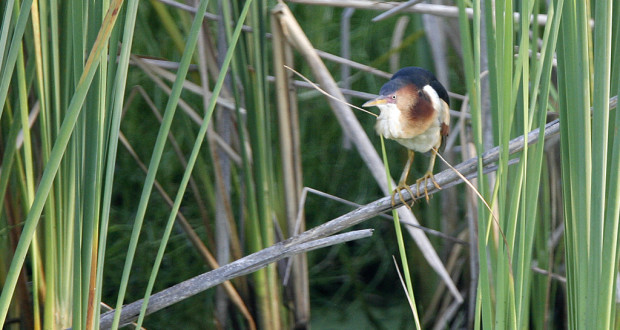• Length: 13 inches
• Wingspan: 17 inches
• Season: Summer/year-round
More about Least Bitterns.
Where they are, and when.
They are similar in shape and behavior to their cousin the American Bittern – with a long neck and long, pointed bill – but are smaller and more colorful. Their plumage is a buff yellow with rust highlights. A dark crown and lower back on the male becomes more of a pale brown in their mates. The juvenile closely resembles the American Bittern with its more distinct breast streaks.
They inhabit fresh and brackish water marshes with tall vegetation. Their ability to suspend themselves on reeds enables them to forage for small fish in deeper water than other herons, a meal they supplement with insects. Least Bitterns build their nests on platforms among the grasses, pulling the surrounding vegetation down to create a canopy.
